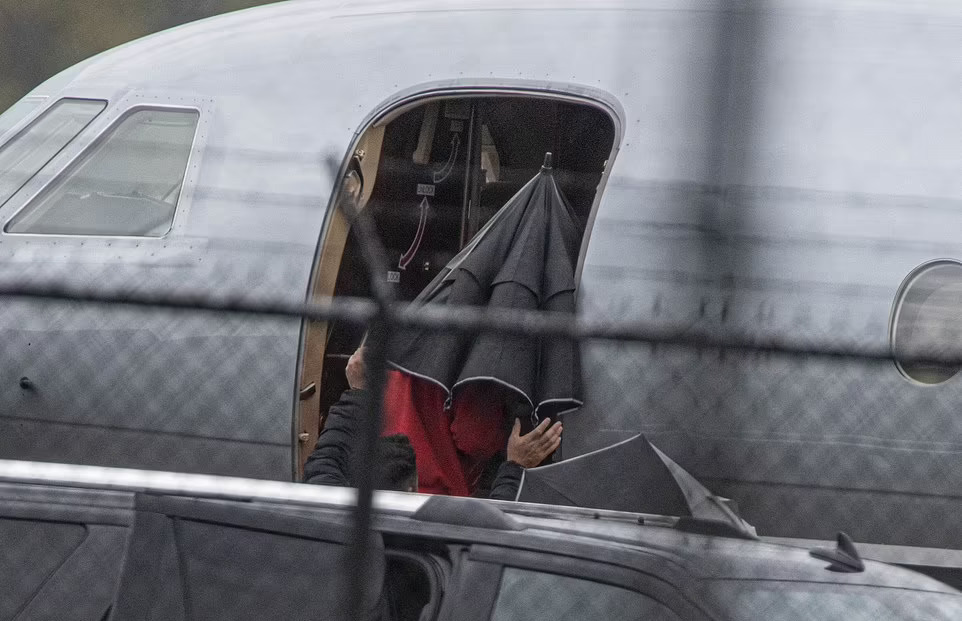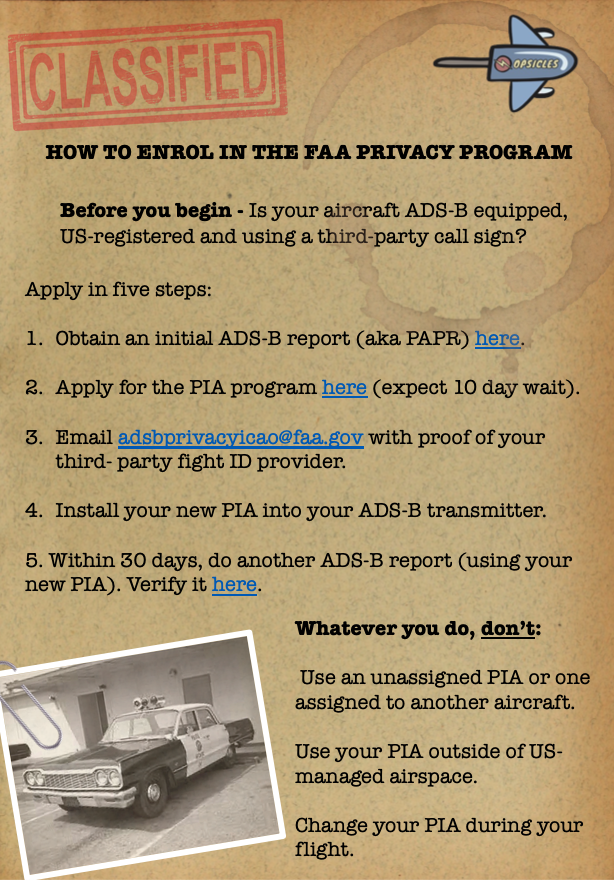Key Points
- The FAA’s Privacy ICAO Address (PIA) program has been expanded to include some new oceanic and Gulf of Mexico routes.
- If you’re not familiar with this program, it prevents users’ aircraft registration from being tracked by third parties using ADS-B output during US domestic flights.
- Check below for exactly which routes this program now applies to, and our Opsicle with steps on how to register.
Aviation privacy is making headline news again this week.
The private jet currently believed to be carrying a certain superstar around the world on a record-breaking world tour is being tracked by her fans – and her legal team aren’t happy.
In fact, they’re threatening to sue a college student running a website that tracks the jet movements of her and other celebrities, politicians, and high-fliers (no pun intended).
The same student has also been famously banned by Elon Musk from X (formally Twitter) after he allegedly shared Elon’s ‘assassination co-ordinates’ – Elon’s words, not ours.

Elon wasn’t happy his jet was being tracked.
Whether or not we feel this is an overreaction is beyond the scope of this article. What does matter is that the private aviation industry often carries clients who for one reason or another would like their identity (and location) to be hidden – and it’s big news at the moment.
And with these headlines may come the expectation from some high-profile passengers that their charter operators now provide privacy to the best of their ability.
Another reason why this issue may soon race back into the public eye is the looming US presidential campaign, where the rules for charter flights carrying participants and their staff have already been eased. There is going to be a lot of VIP traffic buzzing around the US NAS in the coming months.
Enter the FAA
It may be a coincidence, but just last week news broke that they have upgraded the availability of their Privacy ICAO Address (PIA) Program to include new oceanic and Gulf of Mexico routes.
If you’re currently asking ‘what the heck is a PIA program?’ now would be a good time to hit pause, and check out the article we wrote a couple of years back. It will break down for you how it all works.
If you’re feeling brave, buckle up – because here it is in two sentences:
All Mode S equipped aircraft are assigned a unique ICAO 24-bit address – this is uniquely identifiable to your aircraft’s registration. The FAA’s PIA program assigns you another one to use that renders you secret-squirrel.
Staying Incognito
Before we go on, the FAA’s news last week will make more sense if you get your head around a few of its conditions.
To participate, you must tick all three of these boxes:
- Operating an US-registered aircraft which is ADS-B equipped
- Using a third-party call sign
- Flying in US territorial airspace (the mainland, Alaska, Hawaii, and other US territories). Additionally, the PIA has been expanded to include US oceanic FIRs too – those more than 12nm from shore.
After news broke the program had been improved, we struggled to find a summary of the changes and got in touch with the FAA directly.
They advised while there is no ‘master list’ of the newly included routes, they have updated their website to include some valid examples including:
- NYC to LA
- Miami to Houston (via the Gulf of Mexico)
- LA to Hawaii
- Boston to Miami (with offshore routes more than 12nm from shore).
If you have an enquiry about a specific route, you can reach them on adsbprivacyicao@faa.gov. Chances are, as long as you stay within US jurisdiction, your route will be valid.
How to apply?
So, you want in? We’ve put together this little Opsicle with steps on how to register.
More questions?
The FAA has quite a good FAQ section on the PIA which you can access here.
More on the topic:
- More: US FAA: Who wants to land on the runway?
- More: US Federal Govt Shutdown Risk – Why it Matters to Aviation
- More: Canada Mandates ADS-B in Class A Airspace
- More: ADS-B Mandates in 2023
- More: Cloaking Devices: The ADS-B Privacy Issue
More reading:
- Latest: Teterboro: RIP the RUUDY SIX
- Latest: 400% increase in GPS Spoofing; Workgroup established
- Latest: GPS Spoofing WorkGroup 2024
- Safe Airspace: Risk Database
- Weekly Ops Bulletin: Subscribe
- Membership plans: Why join OPSGROUP?












 Get the famous weekly
Get the famous weekly 





